The Bitter Truth About Sweets
. . .
Have you ever wondered why sugar makes everything taste better? Sweetness is one of the most sought-after flavors in foods, and for good reason – it pleasurably stimulates our taste receptors. But what if we told you that all that sweetness isn’t so sweet after all? In fact, consuming large quantities of sugar can have some pretty nasty consequences for your health. Keep reading to find out more.
NO “HEALTHY” SUGARS
Despite marketing claims, there really isn’t a “healthy” sugar or sugar alternative. Sugar in the body regardless of form, all is broken down into simple sugars. In fact, the body does not differentiate between naturally occurring sugars and those that are added to foods. The metabolism pathway is the same regardless of whether sugars are naturally occurring or are added to foods during processing. It does not matter whether the sugar is of natural origin or whether it is added, all sugars are broken down into glucose, fructose and galactose. These three simple sugars are absorbed into the blood stream where they are used by the body for energy or stored as glycogen in muscles or fat cells.
GLYCEMIC INDEX
The glycemic index (GI) is a numerical system for measuring the effects of carbohydrates on blood glucose levels. Carbs are ranked according to how they affect blood sugar. Foods that contain simple sugars, such as white bread and soda, have high GI scores because they cause sudden spikes in blood sugar. Foods that contain complex carbs, such as oatmeal and legumes, have low GI scores because they cause gradual increases in blood sugar.
The glycemic index is a complicated system for determining the speed at which carbohydrates digest and reach the bloodstream as glucose. However, it does not take into account how much of those carbohydrates one actually consumes or what the total effect on blood sugar levels will be.
For example, the glycemic index of table sugar is 65 compared to carrots which have a glycemic index of 49. However, one teaspoon of table sugar only has 4 grams of carbohydrates- about the same amount as one medium carrot. It would take 18 carrots to provide 16 grams of carbohydrate, which is equivalent to one teaspoon of table sugar.
The glycemic load (GL) is the best way to measure how fast carbohydrates are likely to raise your blood sugar levels after eating them. It takes into account both the GI number and the actual amount of carbohydrate consumed. For example, table sugar has a high glycemic index (65), but a low glycemic load (4) (carrots have a high glycemic index, but a very low glycemic load).
NO HIDDEN SUGARS
Refined sugars are all made up of the same thing: sucrose. No matter what type of sugar you choose, if it is not listed as “sucrose” or another specific type of sugar, then it is most likely made up of mostly table sugar.
The best way to avoid hidden sugars in foods you eat is to look for ingredients that end in “-ose”. These are all different types of simple sugars: glucose, maltose lactose, sucrose, fructose, galactose, xylose.
PROPORTIONAL TO WEIGHT
Sugars provide fewer calories per gram than fat and protein. For example, one teaspoon of sugar contains 16 grams of carbohydrate and 4 calories; one tablespoon of honey contains 64 grams of carbohydrate and 265 calories; and one pat of butter contains 0 grams of carbohydrate and 509 calories. The high calorie content in sugars is why people gain weight when using them.
Added sugars are different from naturally occurring sugars, such as the lactose found in milk or fructose in fruit, which also contain other nutrients. Added sugar is just that — added to foods during processing where it provides calories but no other nutritional value.
OUR TOP RANKED SUGARS
Maple Syrup: Maple syrup is one of our top ranked sugars because of the minerals such as manganese zinc, and iron, and is also a good source of antioxidant plant nutrients. Maple syrup is also on our top ranked lists as it is a more sustainable sugar. Maple syrup is sourced from the sap of maple trees; tapping the trees doesn’t harm the tree or affect future yields.
Date Sugar: Date syrup is not just sugar as it is actually a food made from a fruit. Dates are one of the richest sources of antioxidants, specifically phenols. Date sugar is also gluten-free and contains 3 grams of fiber per teaspoon for “bulk” so you can use less sugar in recipes.
Raw Honey: Honey is an antioxidant powerhouse. Raw honey contains more antioxidants than most other sweeteners because of its darker color, which comes from the plant phytonutrients that bees collect from dark-colored flowers. I prefer pure raw honey over “raw” blends with added sugars or flavors.
Blackstrap Molasses: Molasses are by-products of the process to make sugar white. Blackstrap is the final product, which makes it the most concentrated in nutrients, including calcium potassium, iron, magnesium and vitamins B6 and B12.
Raw Cane Sugar: Raw cane sugar has a milder flavor than refined white and brown sugars and can be used as a replacement for either in cooking and baking. Despite the title, it is actually not a raw sugar. The crystals are made from evaporated sugar cane juice which can be unrefined, but is often further processed via filtration and decolorizing. Raw cane sugars are also found under the names of turbinado, panela, demerara and muscovado.
NO CALORIE SWEETENERS
There are also no calorie sweeteners that have no calories and no impact on blood sugar. However, there is a downside to this. No calorie sweeteners don’t provide any nutrients and actually could potentially cause increased cravings for sweet foods because the body expects calories when it senses a sweet taste. Also, no calorie sweeteners may not be safe to consume long term. Most health organizations recommend eating these products in moderation. Sugar alternatives are highly processed and many may cause inflammation and other health problems; they also deplete the body of minerals and nutrients.
Stevia: Stevia is a plant that has been used as a sweetener for hundreds of years. It contains no calories because it doesn’t break down during digestion, so all you absorb is its sweetness. I recommend getting your stevia from the whole plant rather than a refined product and I prefer liquid or powdered forms to granulated.
Monk fruit: Monk fruit is another natural, no calorie sweetener that has been used for hundreds of years in China and Southeast Asia. It contains antioxidants and has been used as both medicine and tea to aid digestion. Refined products contain some calories as they must be concentrated from the fruit.
Yacón Root: Yacón root is a plant native to South America and has been used as food and medicine for centuries. It contains inulin which helps make it taste sweet and provides prebiotics, like dietary fiber, that feed the health promoting bacteria in our gut.
Allulose: Allulose is a naturally occurring sugar that is very rare. It tastes sweet but doesn’t raise blood sugar or insulin levels, which has made it popular with makers of reduced calorie foods. We don’t know enough about allulose because it hasn’t been studied long term so we are unsure as to if it can cause problems when consumed regularly.
So, what’s the takeaway? The bitter truth is that all of those lovely sweeteners we love are metabolized in the same way, and can have negative effects on our health when overconsumed. While sugar intake has been linked to obesity and type II diabetes, it may also play a role in other chronic diseases. Next week, we will explore the impact on sugar and healthspan. In the meantime, follow us on social media for weekly insights in the field of longevity.
Maryland Functional Medicine
Maryland Functional Doctor

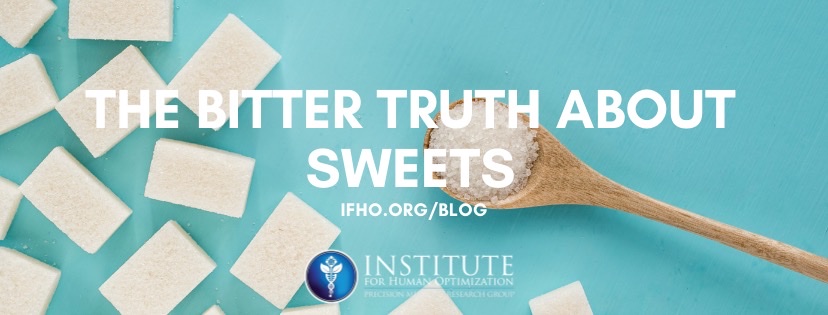
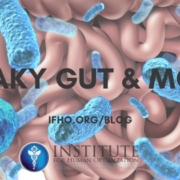
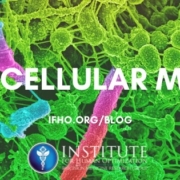

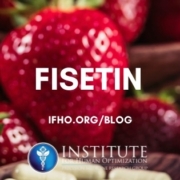
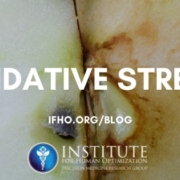






Leave a Reply
Want to join the discussion?Feel free to contribute!